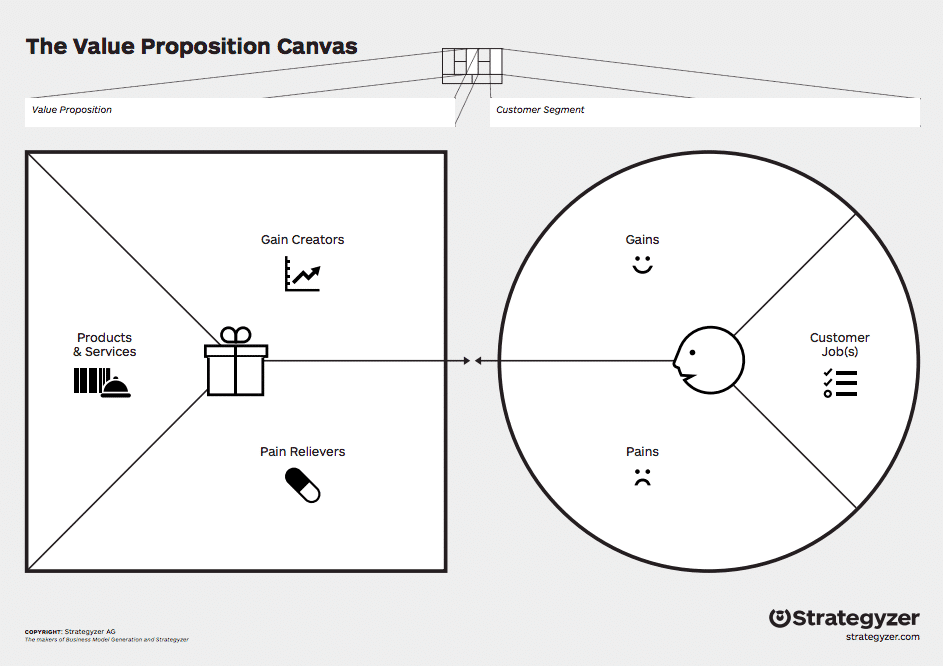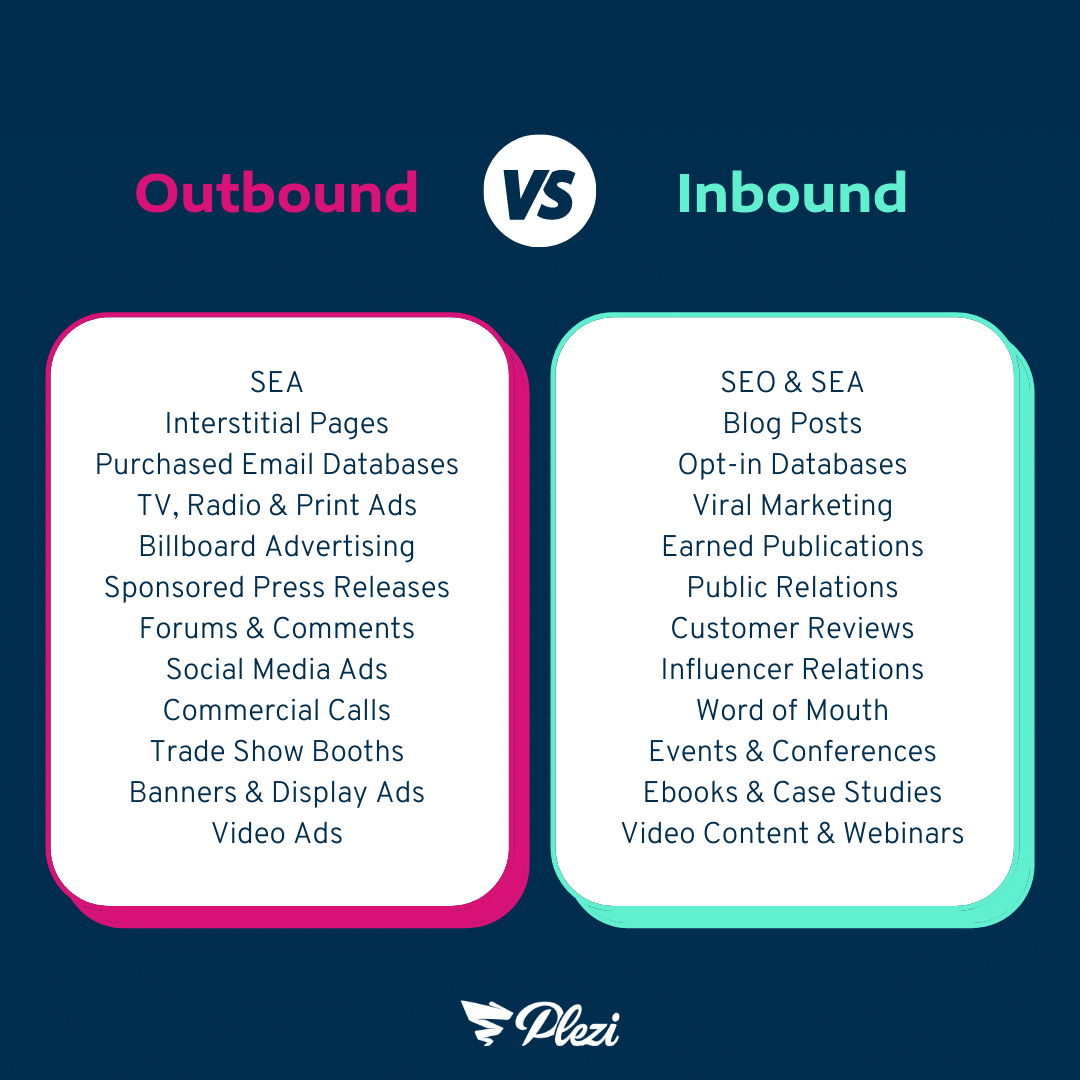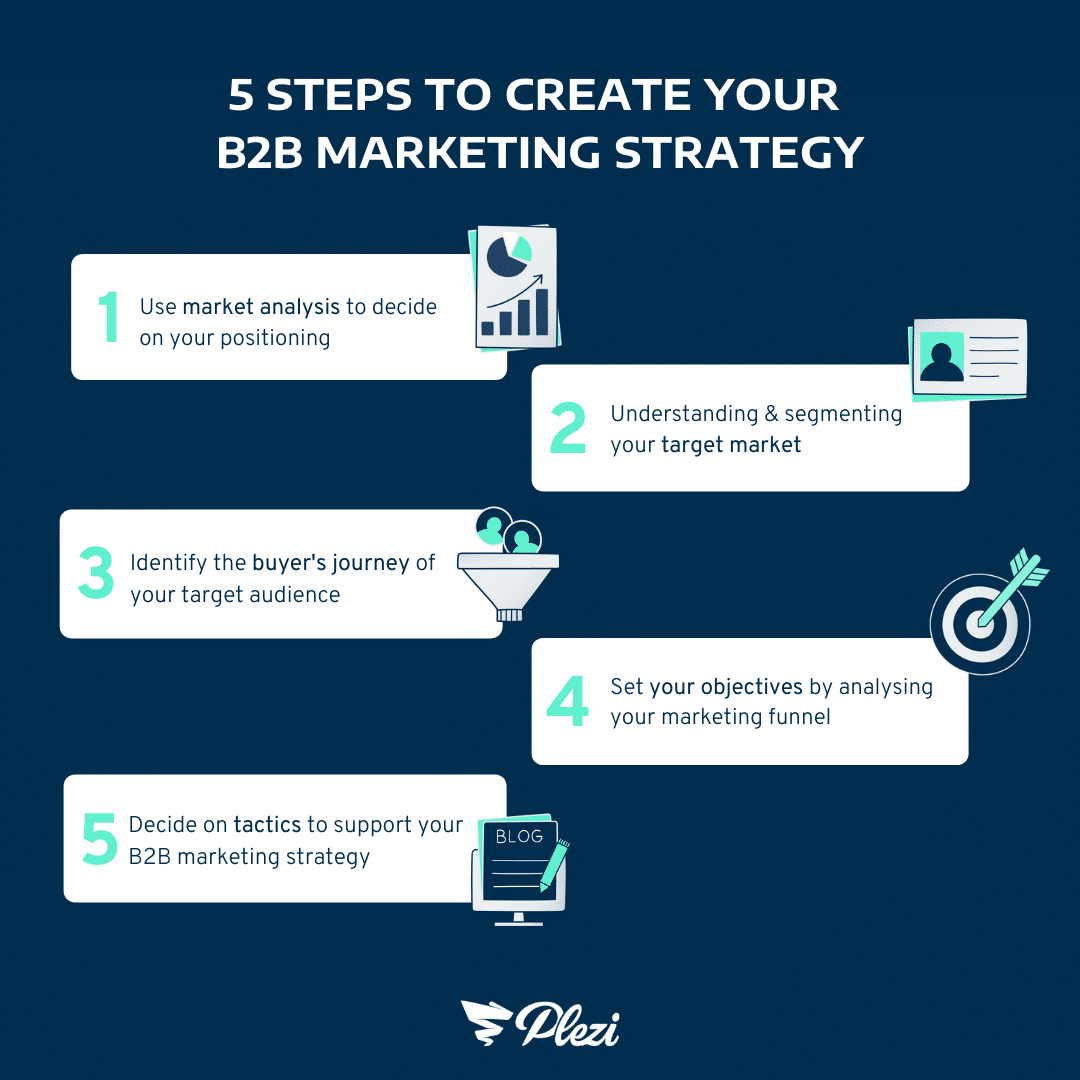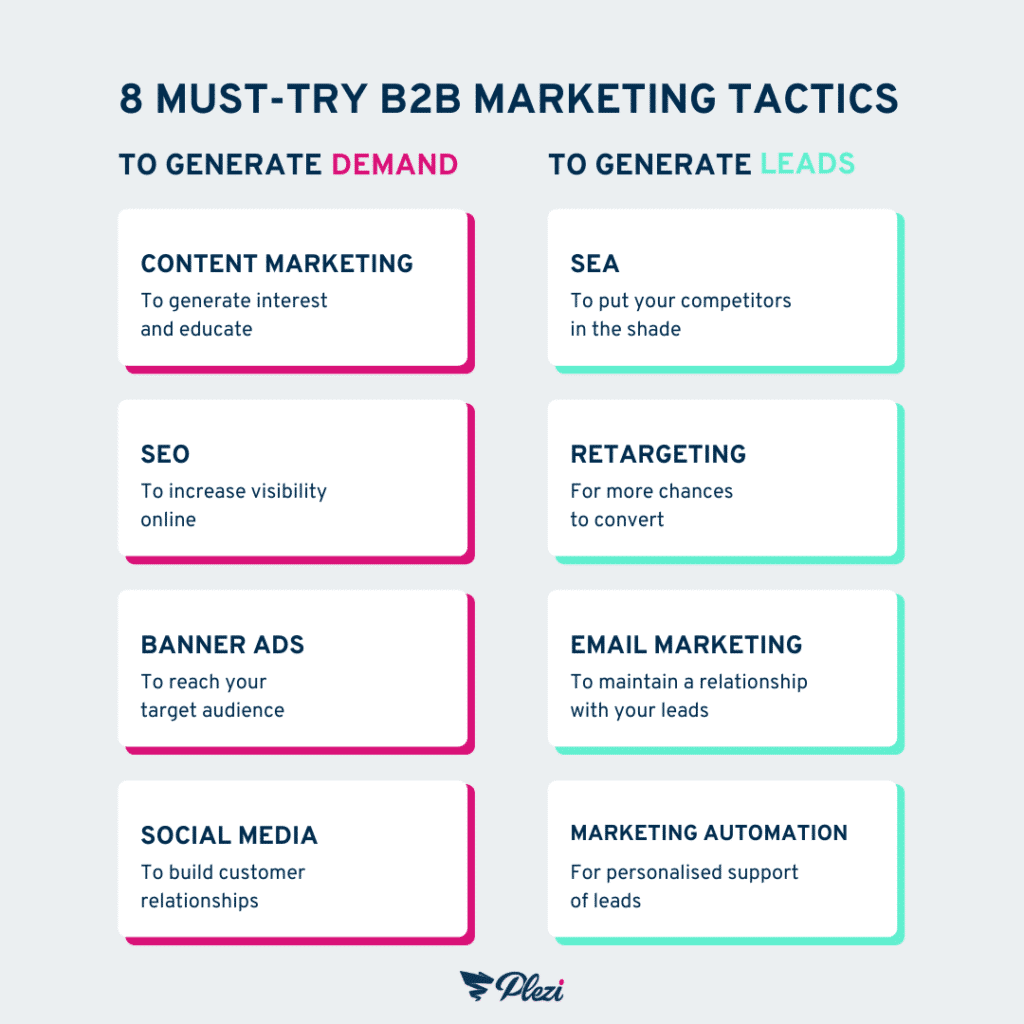There are a range of tools available that can help you develop a B2B marketing strategy. For example, the 4Ps marketing mix, the 7Ps marketing mix, or the BCG matrix. But do they work in a real-world situation? How can you define a B2B marketing strategy worthy of the name while ensuring it can be applied in practice?
If you want to know more about B2B marketing in 2022, you’re in the right place! In the post below, we’ll take an in-depth look at B2B marketing and tell you the most effective B2B marketing tactics you can use today.
- What is B2B marketing?
- What is a B2B marketing strategy?
- 5 steps to create your B2B marketing strategy
- 8 must-try B2B marketing tactics
- Continue and measure
What is B2B marketing?
B2B marketing (or business to business) refers to the marketing of products or services to other companies and organizations.
It differs from B2C marketing, designed to target individual consumers, in some key ways. The B2B sector generally involves longer sales cycles and makes use of different marketing channels. Online purchases, impulse purchases, and physical sales outlets are therefore all less important in B2B.
What is a B2B marketing strategy?
When a lot of marketers think of B2B marketing strategies, they tend to be thinking instead about inbound and outbound marketing tactics. But these are different things altogether.
- A strategy is the plan that we follow to meet our objectives, with specific measures put in place in a certain order.
- A tactic is one of the measures that must be implemented to achieve the objectives outlined in the plan.
Your marketing strategy defines your marketing goals, how you measure the success of your campaigns, who your target audience is, where and how your brand will be positioned. The different marketing tactics that you use all serve this overall strategy.
How to build a B2B marketing strategy?
1. Use market analysis to decide on your positioning
Who are your competitors? Don’t have any? If you really think this is the case, it should set some alarm bells ringing. This means either there is no market for your product or service, the market is not sufficiently developed, or that you believe your “unique” market position means you won’t have any competition.
Let’s take the example of Plezi: “French proprietary B2B marketing automation and inbound marketing tool”. We might think we are unique, but that would be overlooking all the tools that are non-proprietary and not French.
And our potential competitors are not just other marketing automation tools. They also include tools for email marketing, lead scoring, tracking, social media, landing page creation, and more.
We could go even further. The key issue our product addresses is generating more revenue while lowering the cost of customer acquisition. But a potential customer for our product might decide to make outbound marketing the focus of their marketing strategy instead. This then needs to be taken into account in our analysis of the competitive landscape.
Market analysis is essential if you want to find what is sometimes called the “blue ocean”. This involves getting away from the typical spiel used by your competitors and positioning your brand through differentiation. You could also call this finding your “competitive advantage”.
Because unfortunately (or fortunately?), competition is normal in the business world. And potential customers need to quickly see what differentiates one product or service from another. That’s why it’s vital for all businesses to identify a unique selling proposition (USP) and use it to guide decisions about their marketing and sales strategies. For example, one possible solution out of many might be to slash prices.
2. Understanding and segmenting your target market
Buyer personas are essential to any marketing strategy, but marketers often forget the real reason why these are important. They let us see things from our customers point of view and ensure that what we communicate to them is relevant to their needs.
Segmentation should enable you to target your value proposition to the issues and problems faced by your potential customers. You can use our buyer persona kit to help you in this process or adapt the canvas used in the “Lean Startup” methodology.

- Who are you targeting? Age, location, occupation?
- What issues do they face, and more importantly, how can your company provide them with THE solution?
- Do they fall into several categories? Should you segment your target audience?
- Are they different from the companies targeted by your competitors? If so, how?
- Where can you find them? Where do they spend most of their time? Can you reach more easily on social media or Google search?
Let’s take the example of a software publisher. Typically, these companies showcase the features of their product. That might be perfect for convincing someone who uses the software day in day out. But will it convince the person responsible for deciding to purchase the software?
- Feature: Lead scoring
- Value proposition: prioritize leads and focus only on hot leads
- High-level issue: generate more revenue while lowering the cost of customer acquisition
There isn’t necessarily a right or wrong answer here. But completing this exercise can help you improve how you communicate with potential customers and your marketing strategy, as we’ll see in the following step.
3. Identify the buyer’s journey of your target audience
The B2B buying process has six main stages, through which each prospect passes before they become a customer:
- Identifying the problem: “My marketing team doesn’t generate enough qualified leads.”
- Exploring a solution: “What tools can I use to solve this problem?”
- Defining requirements: “I need this tool to be powerful and intuitive.”
- Selecting a supplier: “I’m interested in Plezi.”
- Validation: “I present the project to my executive team and have it validated by them.”
- Signing as a customer: “I sign with Plezi.”
Your strategy should focus on delivering a customer experience that supports a prospect at every stage of the buyer’s journey.
To guide your target audience through the buyer’s journey to purchase, you need to build a trusting relationship with them. Your B2B marketing plan must therefore enable you to meet three key requirements:
- Generate demand using top of the funnel marketing tactics that promote awareness of a problem and generate interest in your product or service;
- Generate and convert leads using middle and bottom of the funnel marketing tactics that convert interest into specific actions;
- Build customer loyalty using marketing tactics that turn one-off customers into repeat customers. This last step brings customers back to the beginning of the buyer’s journey by identifying a new problem.
4. Set your objectives by analyzing your marketing funnel
The marketing funnel lets you move from strategy to tactics. By seeing how we can affect this funnel, we can make strategic choices about things like acquisition, conversion, and retention.
For example, we want to generate more leads at the top of the funnel. To do this we can use inbound marketing or outbound marketing tactics, or a combination of both. This will then let us to choose the specific marketing actions we use:

Some tips for setting objectives:
- To ensure sales and marketing are perfectly aligned, involve the sales team when setting marketing goals.
- To clearly see objectives for the month, quarter, and year ahead, put them into an editorial calendar.
- Think about your marketing reporting process and ensure your objectives are relatively easy to measure and evaluate.
5. Decide on tactics to support your B2B marketing strategy
This is where you move to the operational stage and start using different marketing channels. Your aim here is to be visible throughout the buyer’s journey of your target audience, e.g., in search engine results, on social networks, and at events.
Inbound marketing lends itself very well to this. It involves analysing the needs of your target audience, creating content that addresses these, and distributing it online. If you have content at every stage of the buying cycle of your target audience, you’ll make the job of your sales team a lot easier later on.
You also need a way of ensuring that each tactic you choose can be implemented effectively. This involves setting specific targets and metrics to measure the success of each channel and a tactical plan for each campaign. And to keep your plan on track, you need to know how each tactic fits into the buyer’s journey and works with your other marketing efforts to turn potential customers into actual customers.
To sum up, here are the 5 steps you’ll need to create an effective B2B marketing strategy:
8 tactics for your B2B marketing strategy
To generate demand
Here, the goal is to highlight a problem that companies and potential buyers are experiencing, show them that a solution exists, and that you have it. This will generate interest in your product or service.
1. Content marketing to generate interest and educate
Content marketing involves creating and distributing free content to your target audience. The aim is to increase brand awareness, traffic to your website, the number of leads you generate, and ultimately sales. Common forms of B2B content marketing include things like blog posts, social media posts, newsletters, infographics, videos, white papers, and case studies.
Content marketing is highly important for B2B businesses for one simple reason: the content you create has a great return on investment.
When you continuously publish new content in your area of expertise, people naturally see you as being a leader in your field. As a result, they’ll be more likely to make a purchase from your company. At Plezi, many our customers say that our content was a specific reason why they chose to buy from us.
2. SEO to increase visibility online
Search Engine Optimization (SEO) is a digital marketing tactic designed to improve the ranking of your web pages in search engines like Google.
In B2B, SEO tends to focus on targeting the specific keywords used in searches by B2B buyers. To reach the desired segment of your target audience, you need to optimize your website to ensure they can find your content online.
For example, if you optimize your content for the search query “content marketing”, you’re more likely to be found by someone at the start of the buyer’s journey. But if you optimize content instead for the query “content marketing agency”, you’re more likely to be found by someone at the purchase stage of the funnel.
SEO works hand in hand with content marketing. But you can also create specific pages on your website for your products or services and optimize these for SEO.
3. Banner advertising to reach your target audience
Banner advertising involves displaying images or videos advertising your brand on various websites or in the trade press.
There are three main ways of using banner advertising:
- Sign up to Google’s Adsense program: Adsense displays your advertisements on websites based on their content and visitors. The aim is to target website visitors that match your buyer personas. This can be done easily using the program’s targeting algorithms.
- Advertise on social media: Social networks like Facebook, LinkedIn, and Pinterest have so many users that they enable companies to display advertising to those users most likely to be interested in a specific product or service.
- Advertise in the trade press: The audience of a given sector’s trade press (e.g., online B2B magazines) is usually very specific. As a result, some of these magazines sell advertising space on their website directly to interested companies without needing to go through an ad agency.
4. Social media to build customer relationships
If you haven’t already implemented a social media strategy for your B2B business, you’re missing out on valuable opportunities to build relationships with leads and customers. But your ability to make your next sale might depend on the quality of these very relationships. A great way to start a long-term relationship with potential customers is to reach out to them on social media.
Here are the best types of social media posts to generate demand for a B2B business:
- advertising coming webinars or webinar replays;
- sharing statistics and facts in a “did you know?” format;
- news and events from your sector
- tutorial videos under one minute;
- sharing case studies, white papers, and industry research.
All types of social media channels can potentially be used with B2B marketing. But you should be careful to only choose those that are relevant to your business. The only real exception to this is LinkedIn, which is a dedicated B2B social network.
To generate and convert leads
Using content marketing, SEO, advertising, and social media will enable you to reach your target audience. Your goal now is to encourage them to move to the evaluation and purchase stages of the funnel.
1. Search engine advertising to put your competitors in the shade
B2B buyers often use search engines to find suppliers and companies to partner with. That’s why there’s so much competition for the first place in search results.
Just think about it. Internet users who search for the type of product you sell, for example “marketing automation tool” couldn’t be hotter leads! They are already aware of their pain points and just need someone to provide them with a solution. They’re the best qualified leads that you’ll ever get. And your competitors want them every bit as much as you do.
Search Engine Advertising (SEA) is a great way to display advertising to potential customers at the very moment that they search for the products or services that you offer. By using paid search advertising, you can ensure that your website appears at the top of search engine results.
2. Retargeting for more chances to convert
Retargeting creates another opportunity to put your business in front of web users who are familiar with your brand and have already taken certain actions on your website. In other words, they’ve already visited your website and have been close to making a purchase. Retargeting targets these leads on the websites or platforms they use the most.
If you’re not already convinced, here are a few figures about B2B retargeting:
- 80% of the buying process is finished before direct contact with a lead takes place.
- When a lead contacts a member of your sales team, they are already 80% sure of their decision to buy.
- Retargeting lets you convert up to 50% of web traffic to your website.
- 98% of visitors to your website leave without becoming a customer, but retargeting lets you re-engage them elsewhere online.
- As a result, you can increase your conversion rate by more than 85%.
3. Email marketing to maintain a relationship with leads
Email marketing is still an excellent way to maintain relationships with your contacts. It lets you send them newsletters, invitations to events, or news about your products or services for example.
Email marketing is synonymous with greater engagement. More engagement means more prospects. More prospects mean more conversions. And more conversions mean greater sales revenue.
Email marketing should be a part of any business’s inbound marketing toolbox and used as part of your overall marketing strategy.
4. Marketing automation for personalized support of leads
Adding marketing automation and lead nurturing to your marketing strategy is the best way to turn contacts into qualified leads by sending them content throughout the buying cycle.
Lead nurturing uses automated email marketing to inform and nurture leads towards purchase. Marketing automation is most commonly used to guide leads throughout the customer acquisition process.
This tactic works particularly well in B2B where potential customers need a greater level of information and trust in a company before making a purchase.
Once a lead is on your list of contacts, you can support them with personalized content until they are hot enough to be passed to your sales team.
Check out our blog post on marketing automation and workflows to learn more.
Marketing automation can also be used in conjunction with tactics like content marketing and SEO, which can also be used to generate and convert leads.
5. Continue to test and measure
Your B2B marketing strategy shouldn’t remain set in stone. Instead, it’s something that should evolve over time.
That’s why it’s important to always be trying out new ways of doing things, new channels, and new tactics. This will enable you to continuously optimize your marketing plan and generate better results. And the only way to know if your efforts have been successful is to measure those results with the right data and KPIs.
The marketing tactics outlined above all deserve a place in your marketing toolbox. But both B2B marketing strategies and the behaviour of B2B buyers are constantly changing. Any good marketer needs to stay up to date with these changes. But you should also continuously optimize your website, blog, and marketing campaigns as a result.







